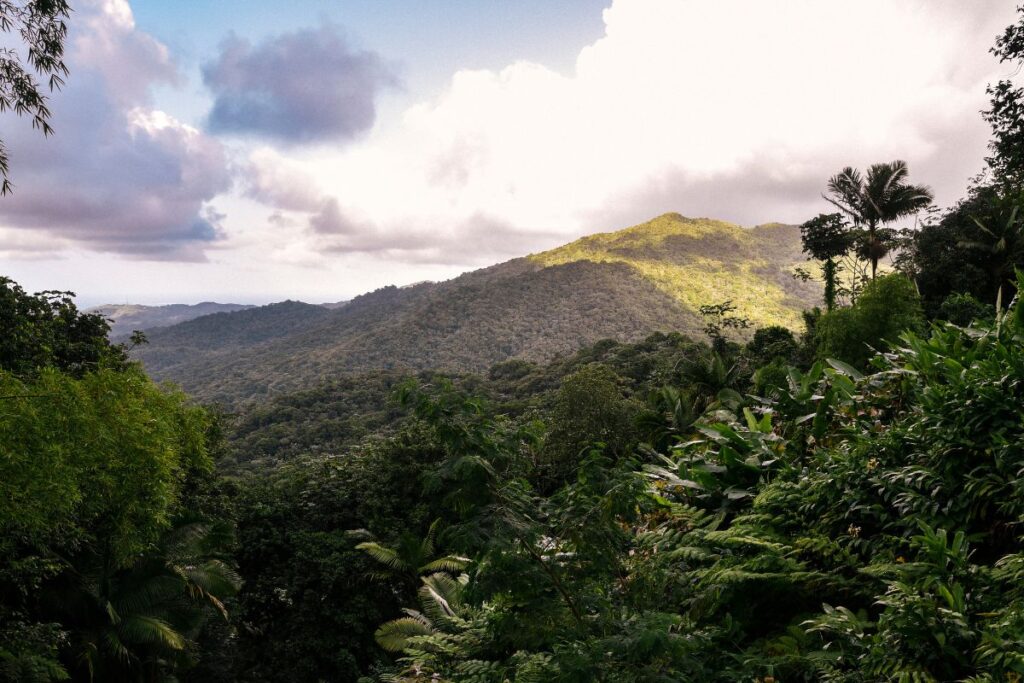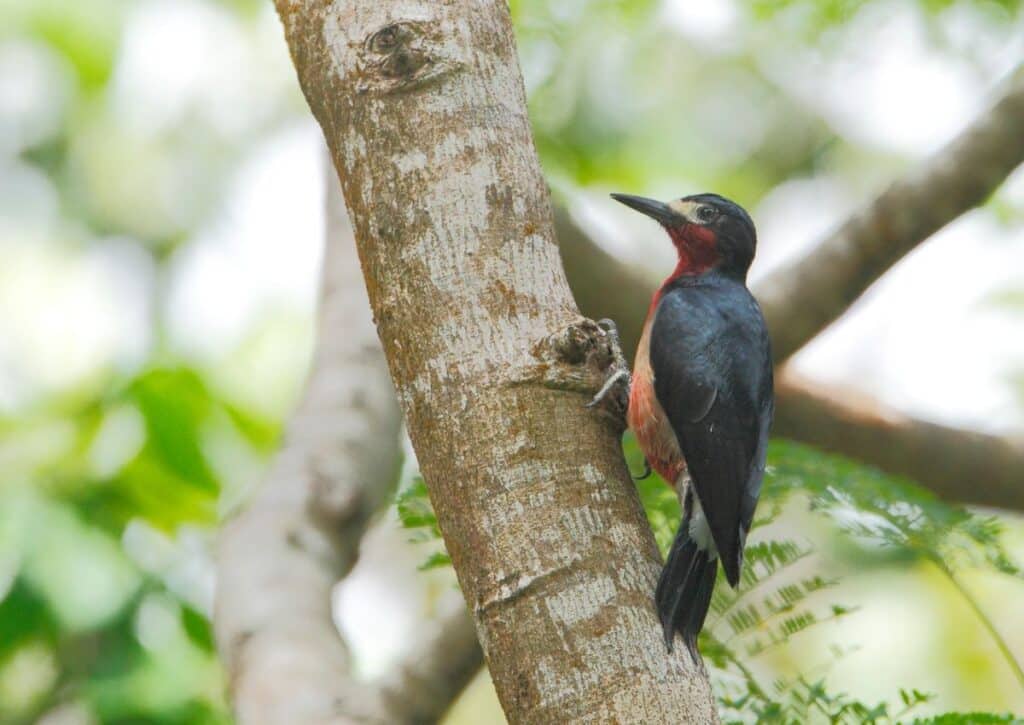Guide to El Yunque National Forest's diverse wildlife, trails, tips and eco-tourism.
El Yunque National Forest is a hotspot for eco-tourists and wildlife enthusiasts. This guide peels back the canopy layer by layer, revealing the habitats and habits of Puerto Rico’s most fascinating creatures.
From the iconic coquí frog to the elusive Puerto Rican Parrot, we’ll navigate through the forest’s must-see spots and hidden corners.
Uncover practical tips for wildlife watching, the best trails for maximum sightings, and the know-how to capture these moments through your lens. I
t’s all about getting you up close with the animals in El Yunque, ensuring an unforgettable experience in Puerto Rico’s natural jewel.
Overview
Location in Northeastern Puerto Rico
El Yunque National Forest is situated in the northeastern part of the main island of Puerto Rico, occupying a significant portion of the Sierra de Luquillo mountain range.
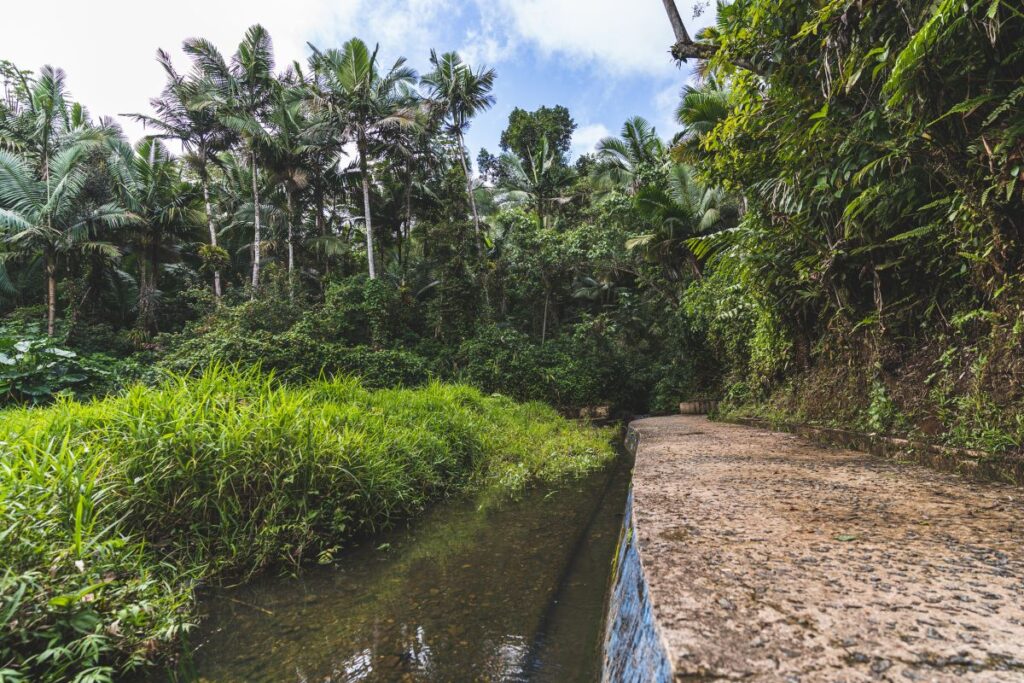
The forest spans across the municipalities of Río Grande, Canóvanas, Las Piedras, and Naguabo.
This prime location places El Yunque within easy reach of various other attractions on the island, making it an ideal destination for visitors looking to immerse themselves in the rich natural beauty of Puerto Rico.
Proximity to San Juan
The forest’s close proximity to San Juan, Puerto Rico’s bustling capital city, further adds to its appeal.
Located approximately 25 miles (40 kilometers) east of San Juan, El Yunque is easily accessible by car or guided tour, with most trips taking around 45 minutes to an hour along well-maintained roads.
This makes El Yunque an attractive destination for both tourists and locals looking for a convenient escape from the city into the serenity of nature.
Size and Landscape Features
Covering an area of approximately 28,000 acres (113 square kilometers), El Yunque National Forest is the largest tract of intact tropical rainforest in Puerto Rico.
The forest is characterized by its impressive mountain range, with peaks rising as high as 3,494 feet (1,065 meters) above sea level.
Among the forest’s most prominent peaks are El Yunque Peak, El Toro Peak, and Pico El Cacique, each offering spectacular views of the surrounding landscape and the Atlantic Ocean.
El Yunque’s landscape is characterized by its lush vegetation, which includes a diverse array of ferns, bromeliads, and orchids.
You also find numerous species of trees, such as the iconic tabonuco and the strikingly red-flowered ausubo.
How to Reach El Yunque National Forest, Puerto Rico:
By Car:
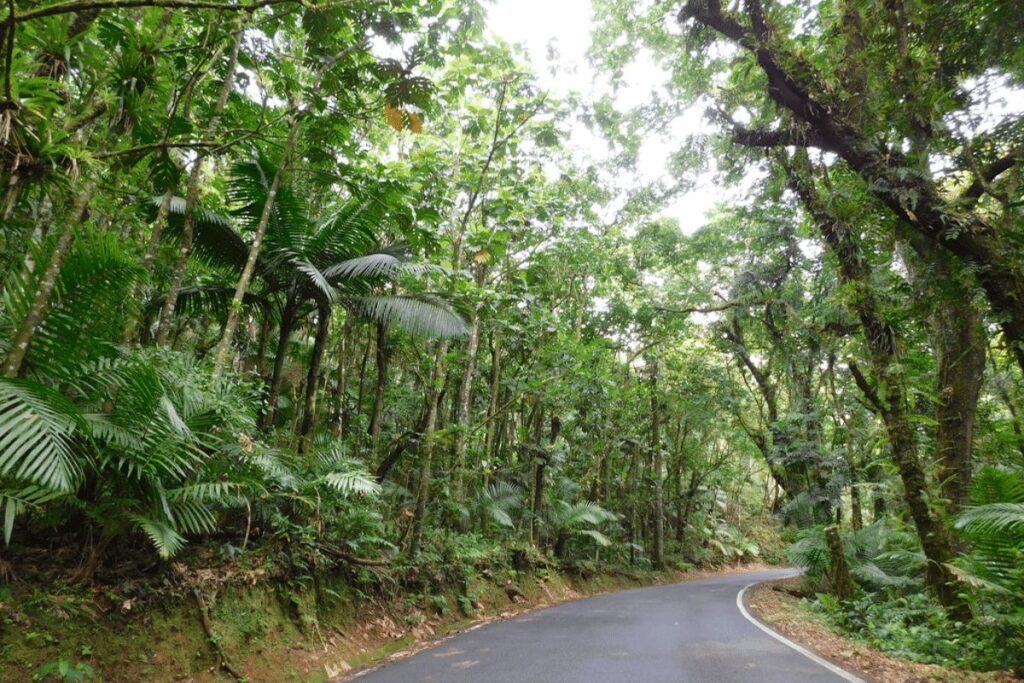
One of the most convenient ways to reach El Yunque National Forest is by car. Renting a car provides the flexibility to explore the forest and its surroundings at your own pace.
From San Juan, the journey takes approximately 45 minutes to an hour, depending on traffic conditions.
The most common route is taking Highway 26 (Expreso Román Baldorioty de Castro) to Highway 66 (Autopista Roberto Sánchez Vilella) and then connecting to Highway 3 before finally turning onto Road 191, which leads directly into the forest.
Guided Tours:
Guided tours are another popular option for visiting El Yunque National Forest. Several tour operators offer full-day or half-day excursions from San Juan and other nearby locations.
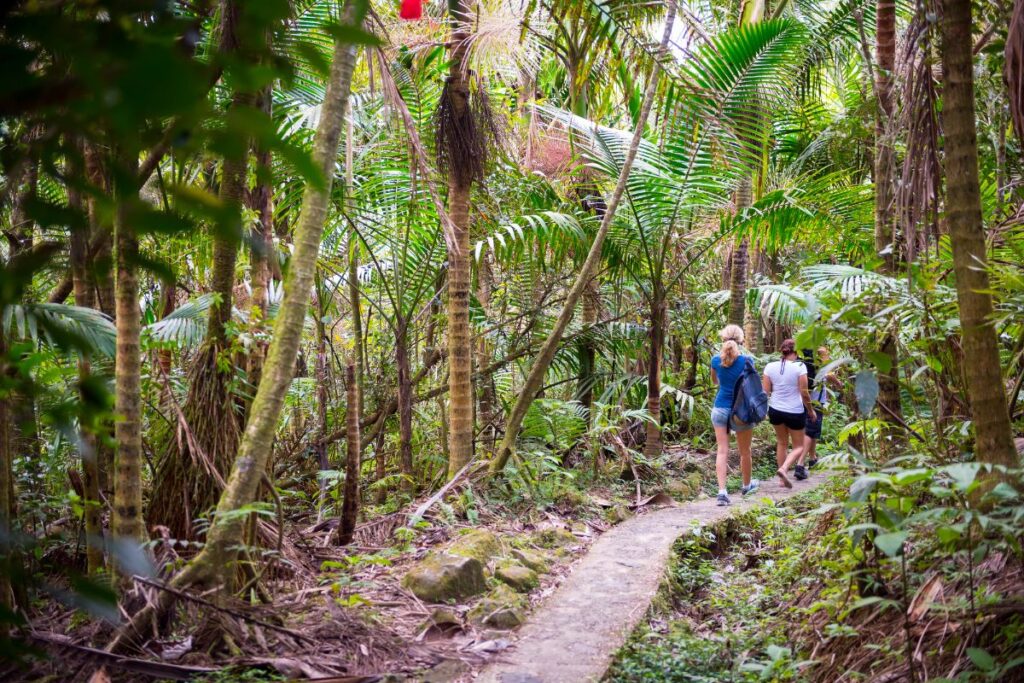
These tours often include transportation, a knowledgeable guide, and sometimes additional activities such as hiking, swimming, or zip-lining.
Guided tours are an excellent choice for travelers who prefer a more structured experience or who would like to learn about the forest’s history, flora, and fauna from an expert.
Public Transportation Options:
While public transportation options are somewhat limited, it is still possible to reach El Yunque National Forest using public buses and taxis.
From San Juan, you can take the AMA (Autoridad Metropolitana de Autobuses) bus to Río Piedras Terminal, where you can catch a second bus to the town of Río Grande.
From Río Grande, you may need to hire a taxi to take you to the entrance of the forest on Road 191.
Keep in mind that public transportation may be less reliable and could require more planning, but it is an affordable alternative for budget-conscious travelers.
25 Birds and Animals Seen in El Yunque National Forest, Puerto Rico
El Yunque National Forest, a tropical rainforest paradise located in northeastern Puerto Rico, is home to a diverse array of animals and birds.
The unique ecosystem supports a multitude of species, many of which are endemic to the island.
In this guide, we will delve into the fascinating fauna of El Yunque, exploring the various creatures that inhabit this enchanting natural wonder.
The Iconic Coquí Frog
As one of the most emblematic species of Puerto Rico, the coquí frog is a small amphibian known for its melodic nighttime calls.
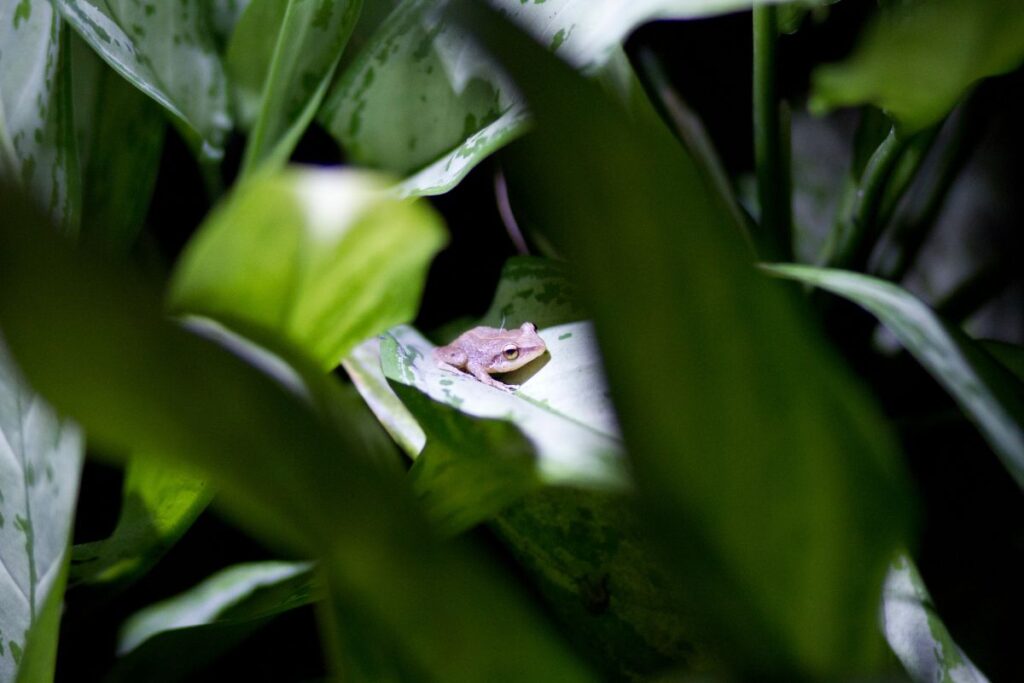
There are 17 species of coquí frogs found on the island, with at least 13 of them living within El Yunque National Forest.
The most common species is the common coquí (Eleutherodactylus coqui), which is often heard singing “ko-KEE” throughout the forest.
Coquí frogs are essential to the ecosystem, as they help control insect populations and serve as prey for various predators.
The Endangered Puerto Rican Parrot
The Puerto Rican parrot (Amazona vittata) is a critically endangered species endemic to the island.
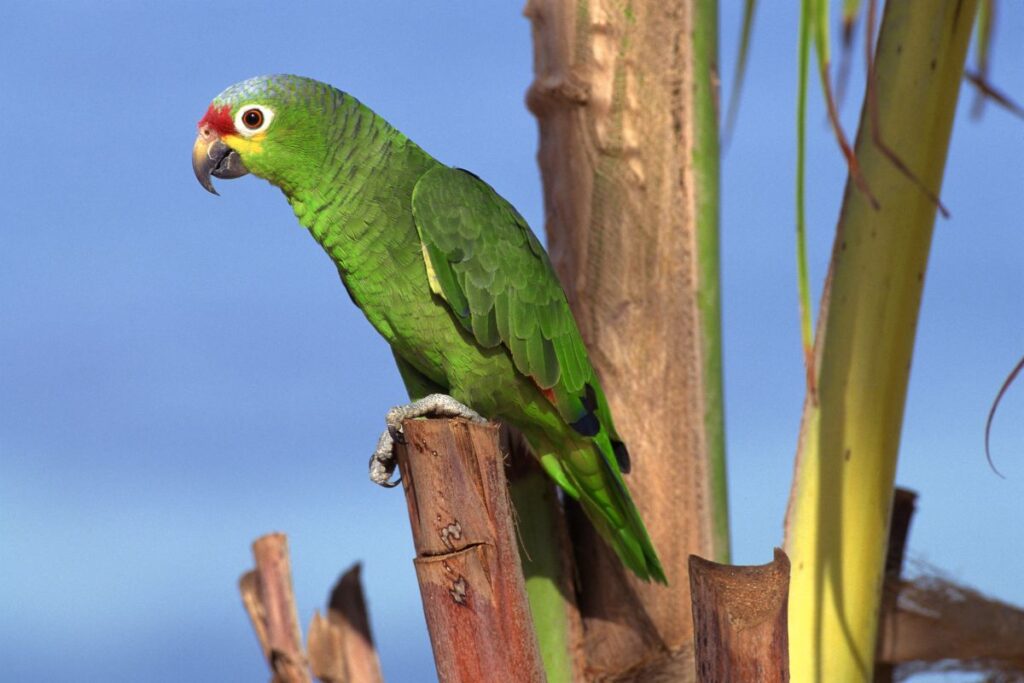
Once abundant throughout Puerto Rico, the parrot’s population has drastically declined due to habitat loss, hunting, and competition with introduced species.
Thanks to conservation efforts, the population has slowly begun to recover, and El Yunque National Forest now serves as one of the last strongholds for this beautiful bird.
The Puerto Rican parrot is characterized by its bright green plumage, red forehead, and white eye rings.
The Puerto Rican Boa
Another endemic species found in El Yunque National Forest is the Puerto Rican boa (Chilabothrus inornatus).
This non-venomous snake can grow up to 7 feet (2.1 meters) long and is known for its distinctive pattern of dark bands on a lighter background.
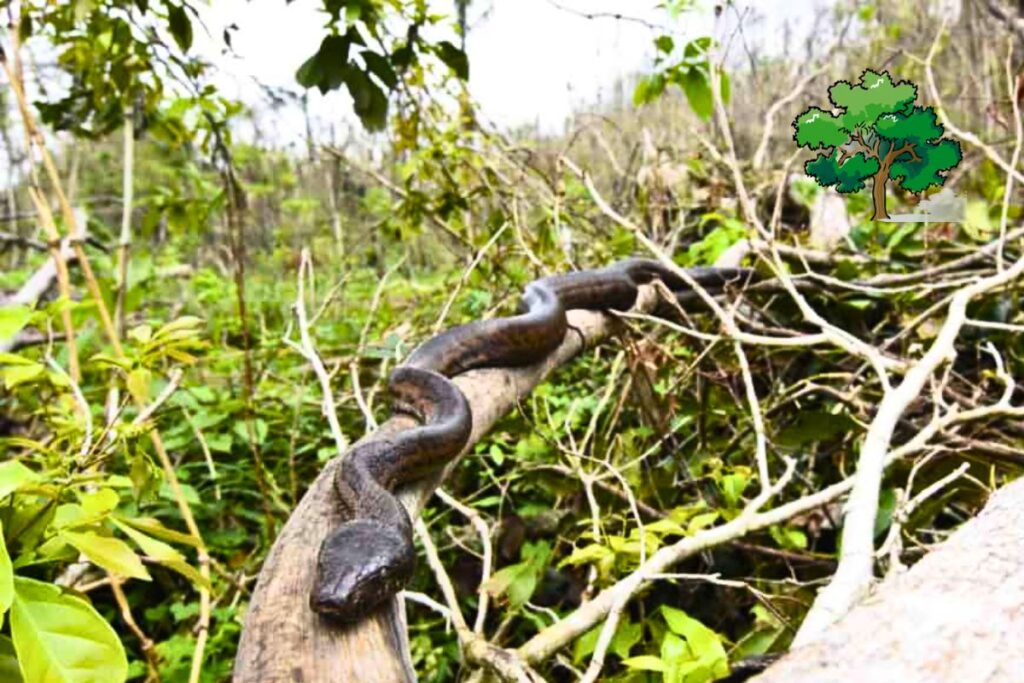
The Puerto Rican boa is primarily nocturnal and arboreal, meaning it spends most of its time in trees.
It preys on rodents, birds, and lizards, and is even known to snatch bats right out of the air as they exit their caves.
The Elusive Puerto Rican Tody
The Puerto Rican tody (Todus mexicanus) is a small, brightly colored bird endemic to the island. With its brilliant green back, red throat, and white belly, this tiny bird is a delightful sight for birdwatchers.
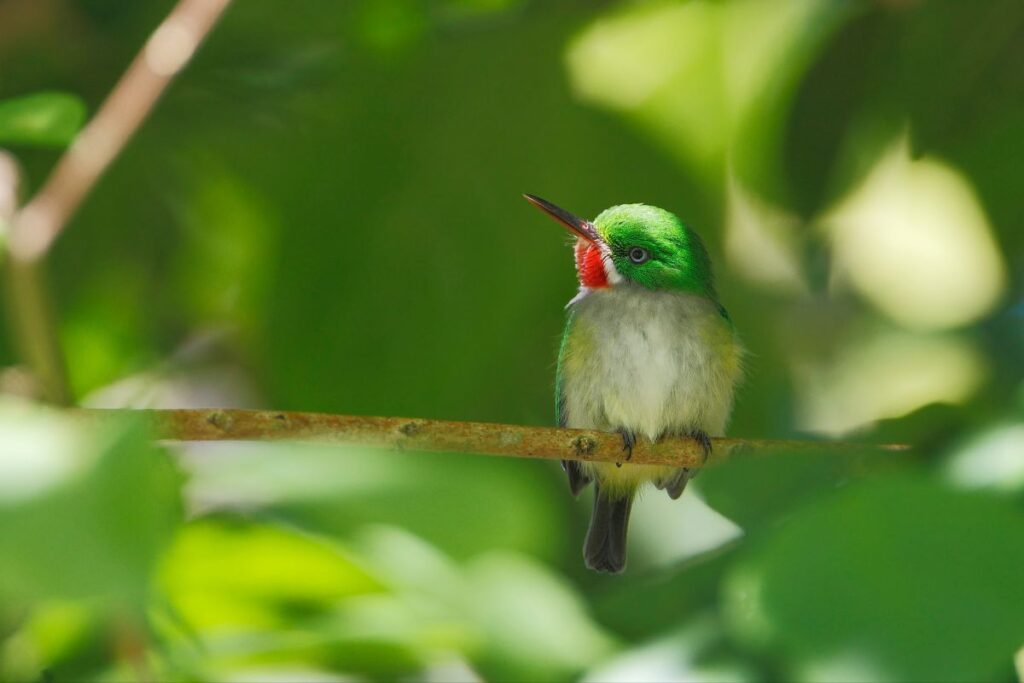
The tody is an insectivore, feeding on a variety of insects, spiders, and other small invertebrates.
Although it is not considered threatened, the Puerto Rican tody is elusive and can be challenging to spot due to its small size and preference for dense vegetation.
The Puerto Rican Emerald Hummingbird
One of the many avian treasures of El Yunque National Forest is the Puerto Rican emerald hummingbird (Chlorostilbon maugaeus), another species endemic to the island.
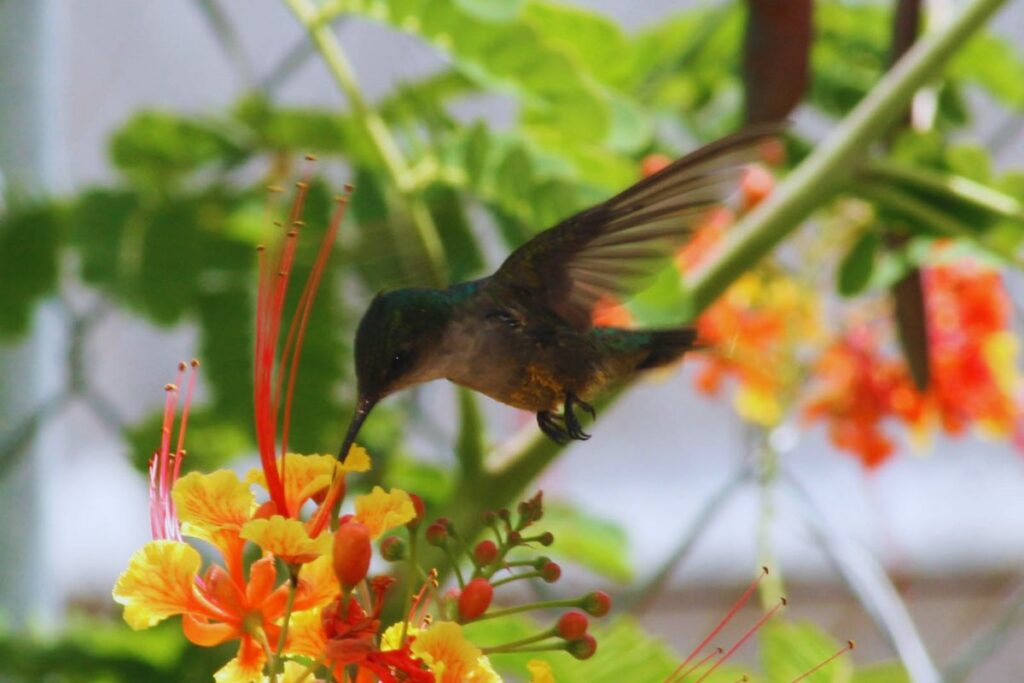
This iridescent green hummingbird is often seen flitting among the forest’s flowering plants, feeding on nectar and insects.
Its rapid wing beats produce a distinctive humming sound, earning it the name “zumbadorcito” in Spanish.
The Red-Tailed Hawk
The red-tailed hawk (Buteo jamaicensis) is a large bird of prey found in El Yunque National Forest.
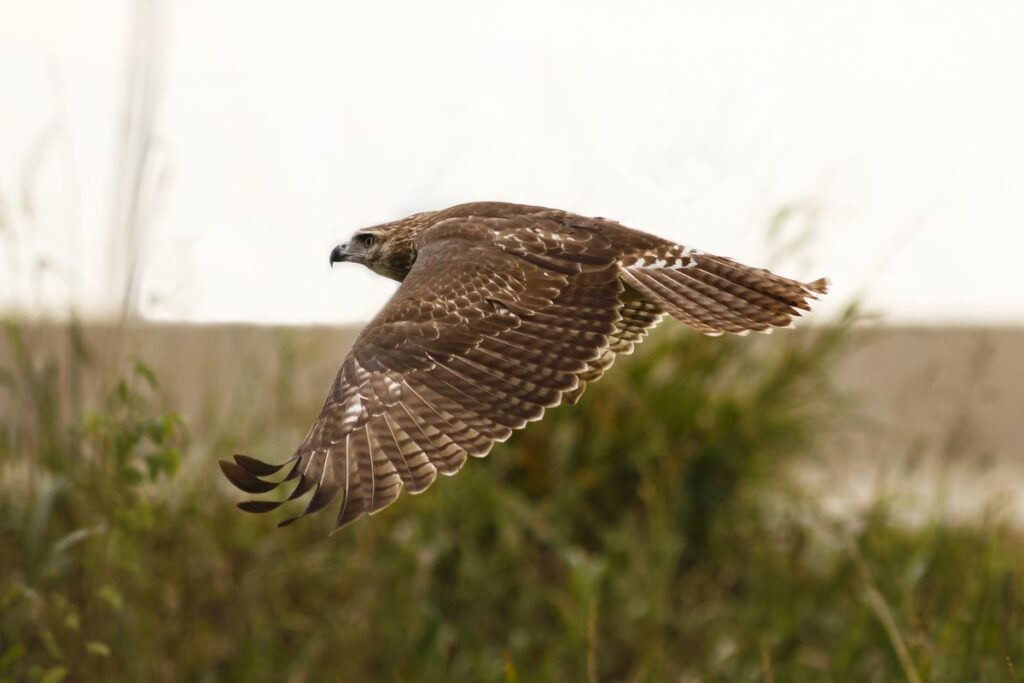
This raptor has a widespread distribution throughout North America, including Puerto Rico.
It is easily identified by its broad wings, reddish-brown tail, and soaring flight pattern.
The red-tailed hawk is an opportunistic predator, feeding on a variety of prey, such as rodents, birds, and reptiles.
The Scaly-Naped Pigeon
The scaly-naped pigeon (Patagioenas squamosa) is a large, attractive pigeon species that can be found in El Yunque National Forest.
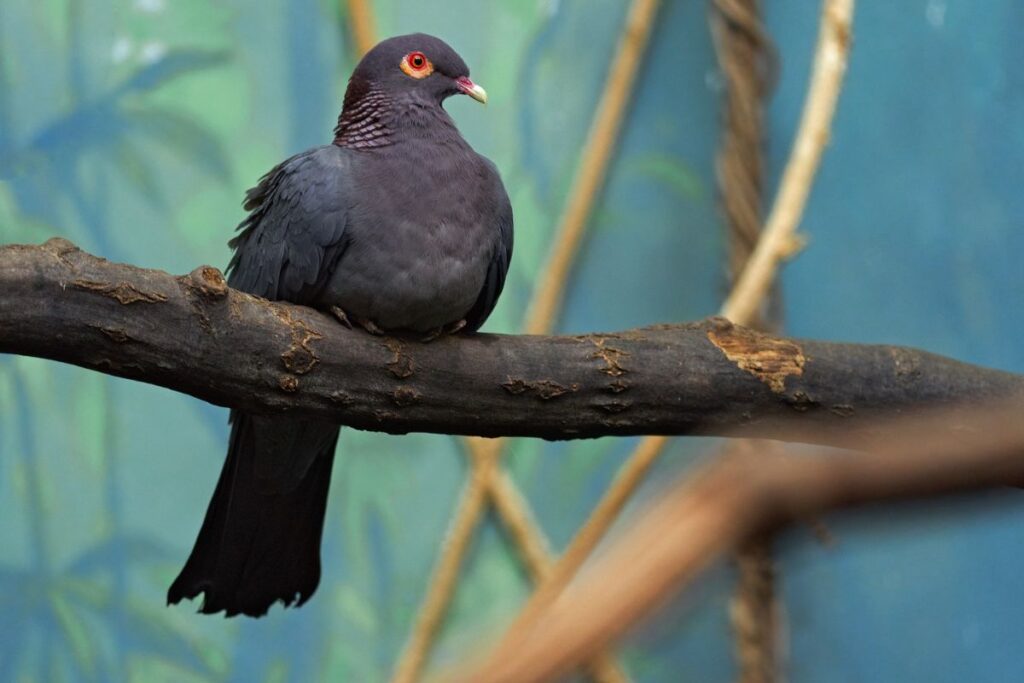
This bird is characterized by its purplish-gray plumage, a distinctive scaly pattern on the back of its neck, and a white-tipped tail.
The scaly-naped pigeon feeds primarily on fruits and seeds, playing a vital role in seed dispersal within the forest ecosystem.
The Greater Antillean Grackle
The Greater Antillean grackle (Quiscalus niger) is a medium-sized blackbird that is widespread in Puerto Rico, including El Yunque National Forest.
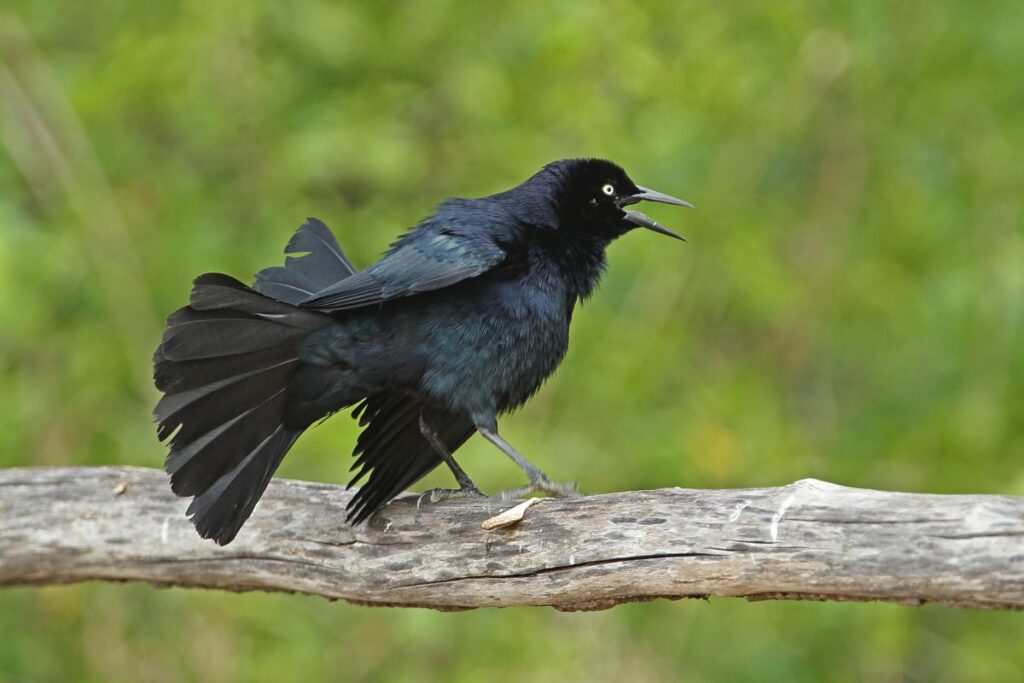
This species features glossy black plumage with a long, keel-shaped tail and bright yellow eyes.
The Greater Antillean grackle is known for its bold behavior and varied, musical vocalizations.
It feeds on a diverse diet, including insects, fruits, seeds, and occasionally small vertebrates.
The Mangrove Cuckoo
The mangrove cuckoo (Coccyzus minor) is a secretive bird that can be found in the lowland areas of El Yunque National Forest, particularly near wetlands and mangroves.
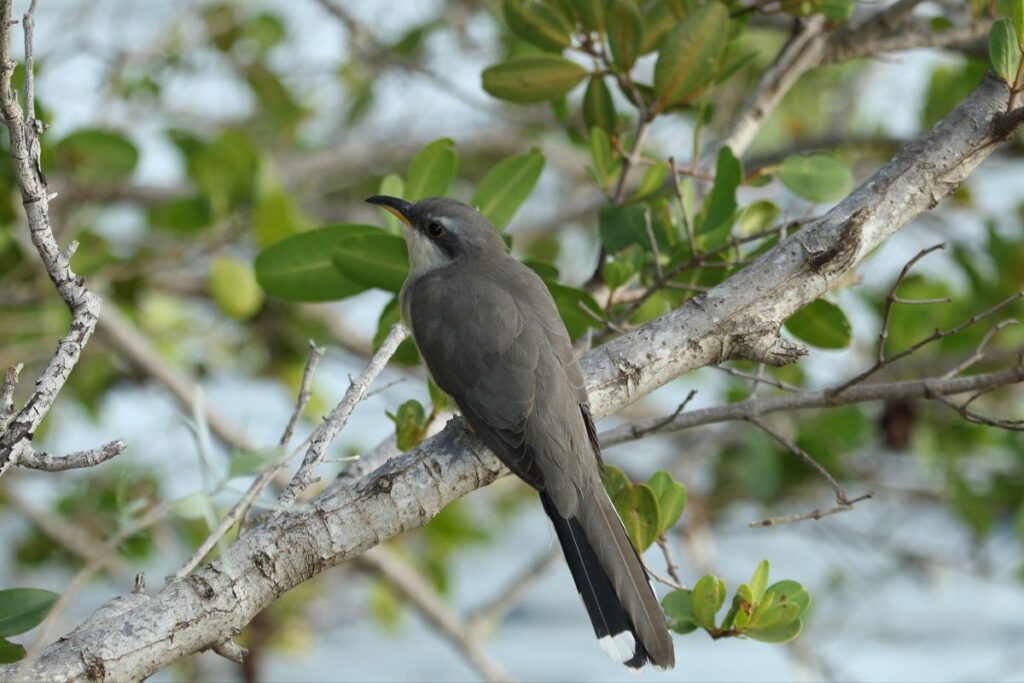
This species has striking plumage, with a grayish-brown back, creamy white underparts, and a yellow eye-ring.
The mangrove cuckoo is primarily insectivorous but also consumes fruits and small vertebrates.
Its elusive nature and preference for dense vegetation make it a challenging species to observe.
The Puerto Rican Crested Anole
The Puerto Rican crested anole (Anolis cristatellus) is a small, agile lizard that is commonly found in El Yunque National Forest.
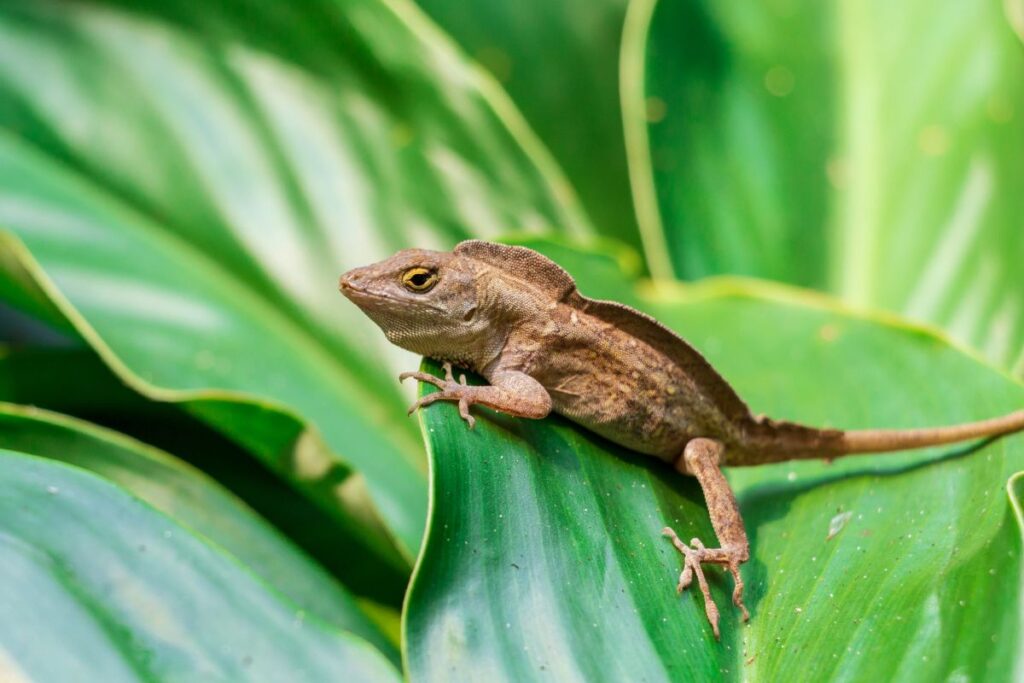
This species is endemic to Puerto Rico and can be easily identified by its distinctive dorsal crest and color-changing abilities.
Males are territorial and display their brightly colored throat fans, known as dewlaps, to intimidate rivals or attract females.
The Puerto Rican crested anole feeds on insects and other small invertebrates.
The Puerto Rican Giant Centipede
The Puerto Rican giant centipede (Scolopendra alternans) is an impressive arthropod that inhabits the leaf litter and decaying wood of El Yunque National Forest.
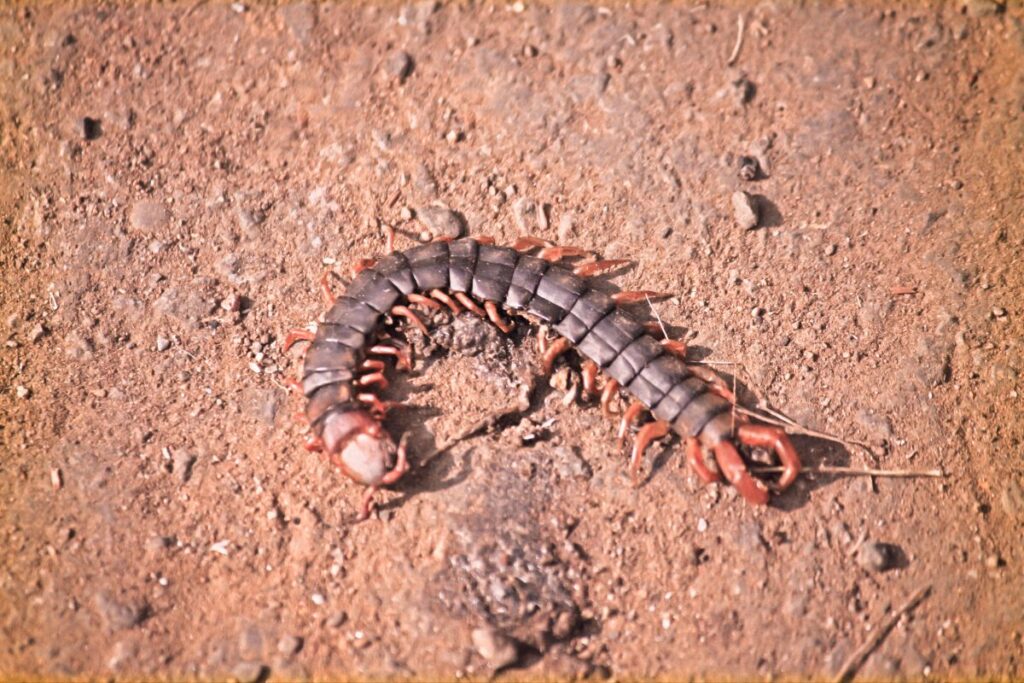
This centipede can grow up to 10 inches (25 centimeters) in length and is characterized by its reddish-brown body and numerous pairs of legs.
Although not aggressive towards humans, the Puerto Rican giant centipede possesses venomous glands and can deliver a painful bite if threatened.
The Antillean Euphonia
The Antillean euphonia (Euphonia musica) is a small, brightly colored songbird that can be found in the canopy of El Yunque National Forest.
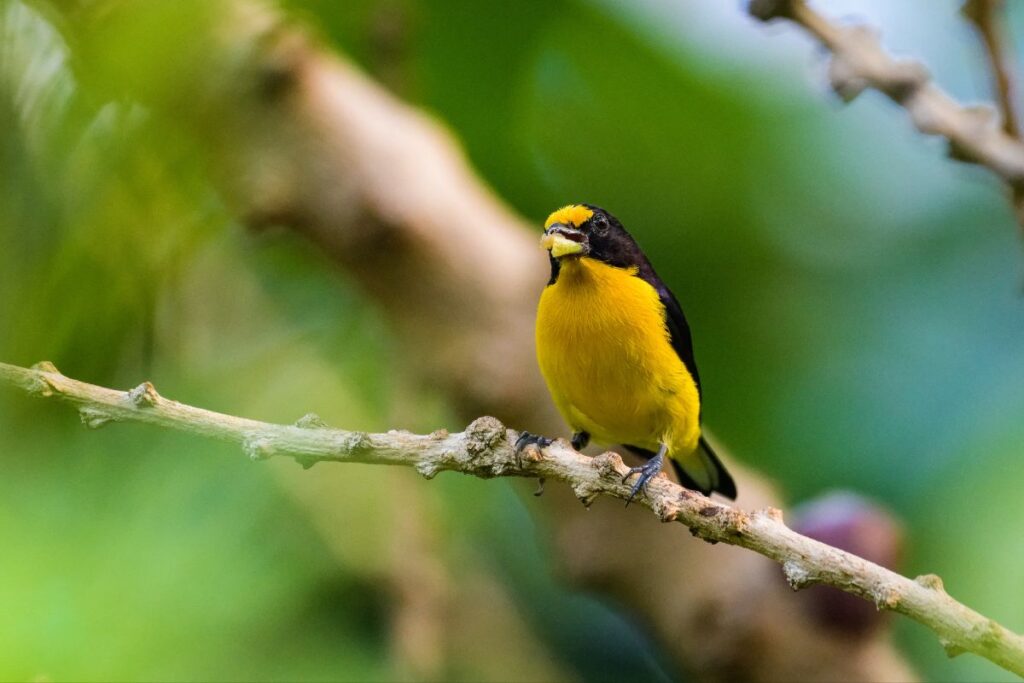
This species features a striking combination of blue, yellow, and black plumage, making it a sought-after sighting for birdwatchers.
The Antillean euphonia feeds primarily on fruits and seeds, particularly mistletoe berries, and plays an essential role in seed dispersal within the forest ecosystem.
The Guava Skipper Butterfly
The guava skipper (Phocides polybius) is a striking butterfly species that can be found in El Yunque National Forest.
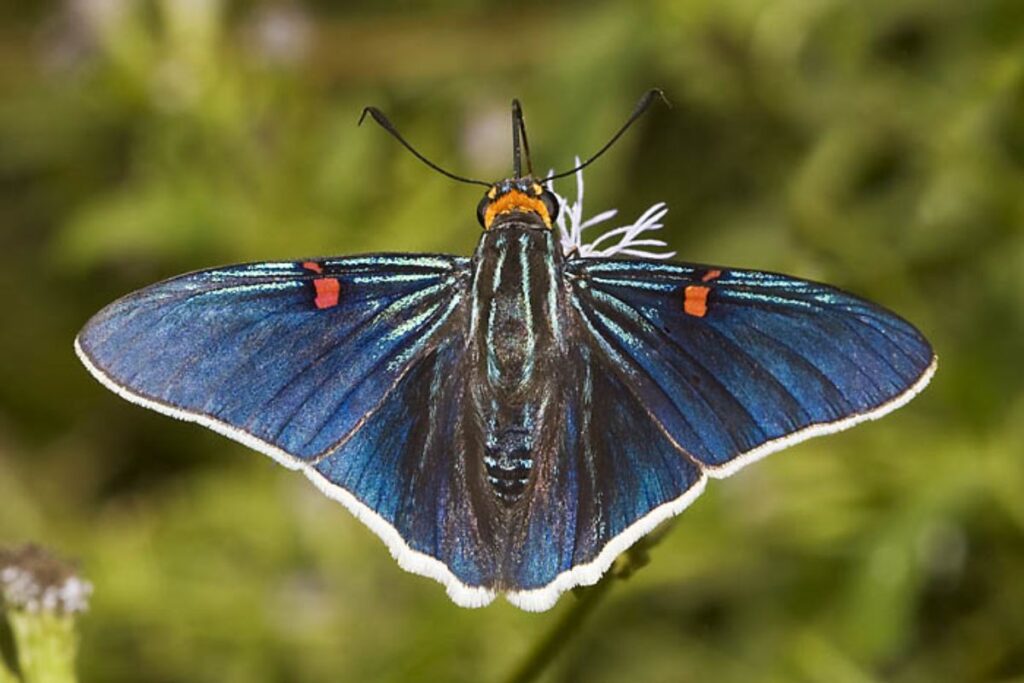
This medium-sized butterfly is characterized by its dark brown wings with bold, iridescent blue markings.
The guava skipper is an essential pollinator within the forest, visiting a variety of flowering plants to feed on nectar.
The Puerto Rican Bank Tree Snail
The Puerto Rican bank tree snail (Caracolus caracolla) is an endemic species found in El Yunque National Forest.
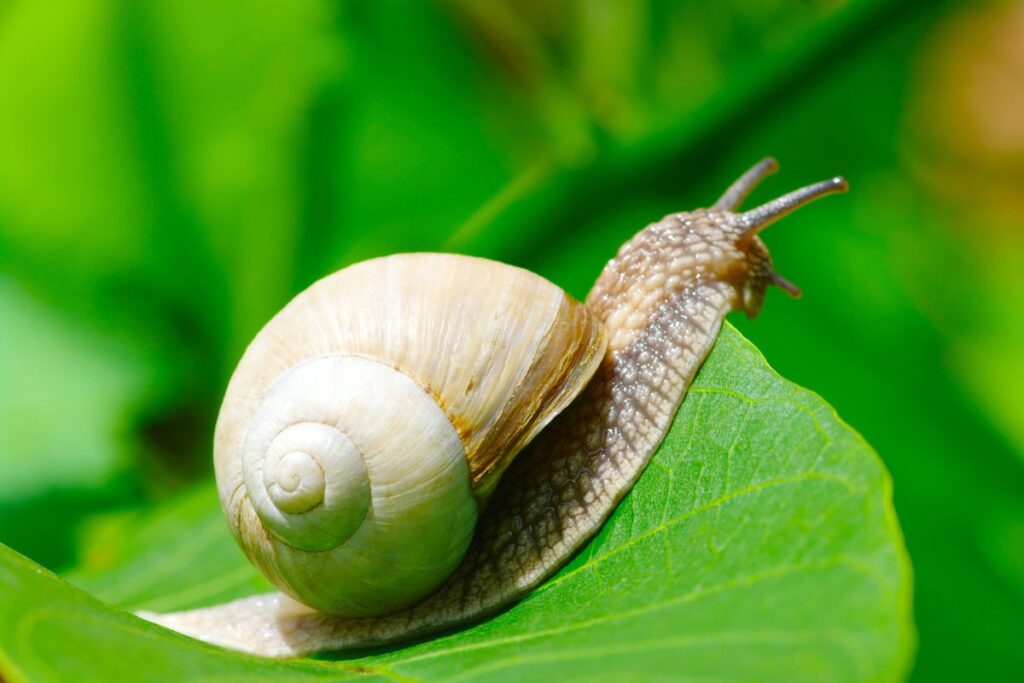
This large, colorful snail is characterized by its striking shell, which features a variety of vibrant patterns and colors, including yellows, oranges, and reds.
The Puerto Rican bank tree snail is primarily arboreal, living on tree trunks and branches, and feeds on fungi, algae, and lichens.
It plays an important role in maintaining the health of the forest ecosystem by consuming decomposing organic material.
The White-Crowned Pigeon
The white-crowned pigeon (Patagioenas leucocephala) is a large, striking bird that can be found in the canopy of El Yunque National Forest.
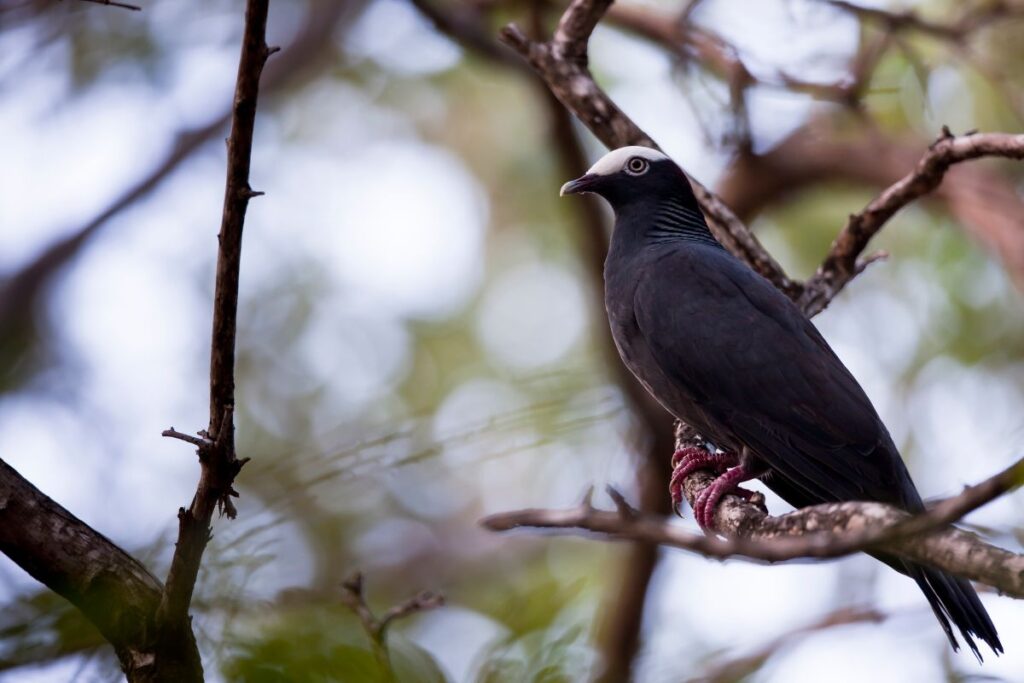
This species is characterized by its slate-gray body, white crown, and iridescent green and purple neck feathers.
The white-crowned pigeon is primarily frugivorous, feeding on a variety of fruits, especially those from the Ficus and Metopium species.
Like other fruit-eating birds, it plays a crucial role in seed dispersal within the forest ecosystem.
The Northern Potoo
The northern potoo (Nyctibius jamaicensis) is a nocturnal bird species that can be found in the canopy of El Yunque National Forest.
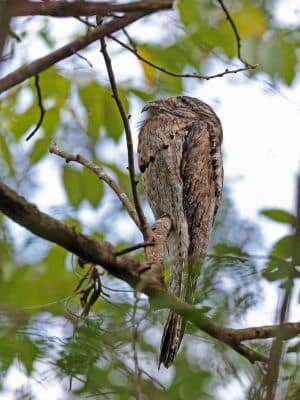
This cryptic species is known for its ability to camouflage itself among tree branches during the day, making it difficult to spot.
The northern potoo has large, yellow eyes, which help it hunt insects at night. Its unique call, a mournful whistle, can be heard echoing through the forest after dark.
The Antillean Manatee
The Antillean manatee (Trichechus manatus manatus) is a subspecies of the West Indian manatee that can occasionally be found in the waterways near El Yunque National Forest.
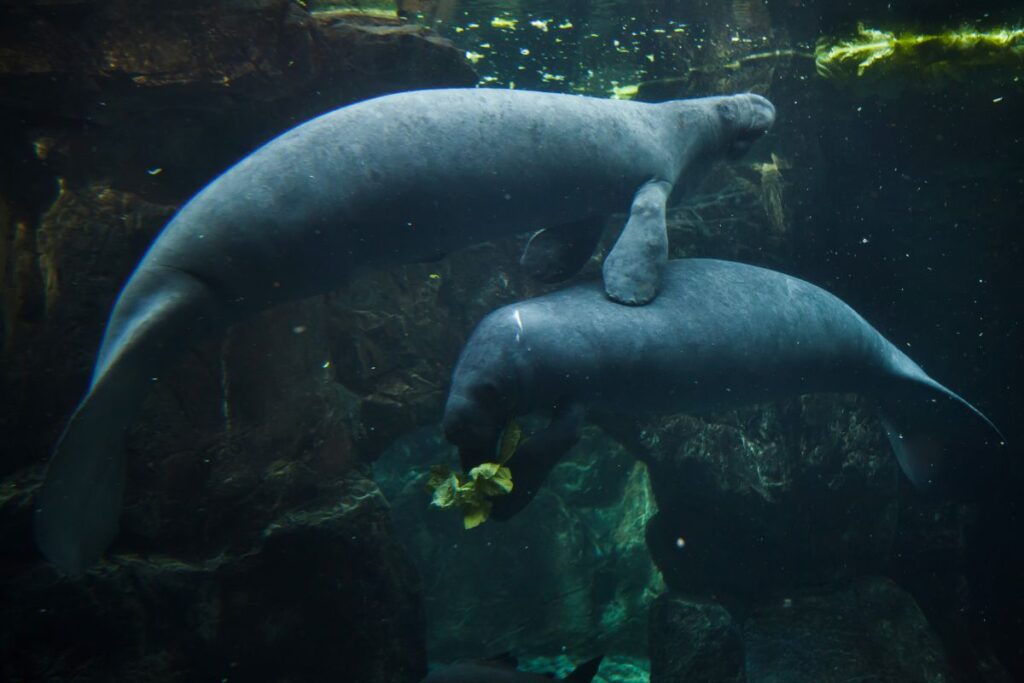
This gentle, slow-moving marine mammal is characterized by its large, barrel-shaped body, paddle-like flippers, and rounded tail.
The Antillean manatee is herbivorous, feeding on aquatic vegetation such as seagrasses and algae.
Although sightings within El Yunque are rare, these endangered creatures are an important part of Puerto Rico’s aquatic ecosystem.
The Puerto Rican Screech Owl
The Puerto Rican screech owl (Megascops nudipes) is a small, nocturnal owl endemic to the island.
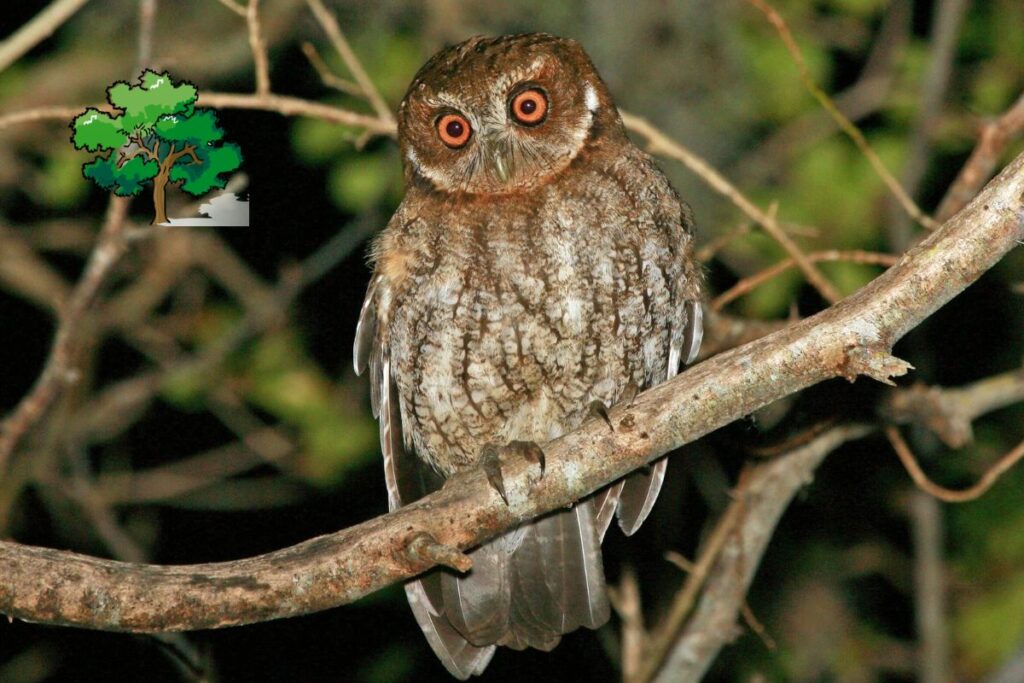
This species can be found in the dense vegetation of El Yunque National Forest, where it hunts for insects, small mammals, and birds.
The Puerto Rican screech owl is characterized by its mottled gray and brown plumage, which helps it blend into its surroundings.
Its distinctive call, a series of whistled notes, is a familiar sound in the forest at night.
The Antillean Fruit Bat
The Antillean fruit bat (Brachyphylla cavernarum) is a medium-sized bat species that can be found in El Yunque National Forest.
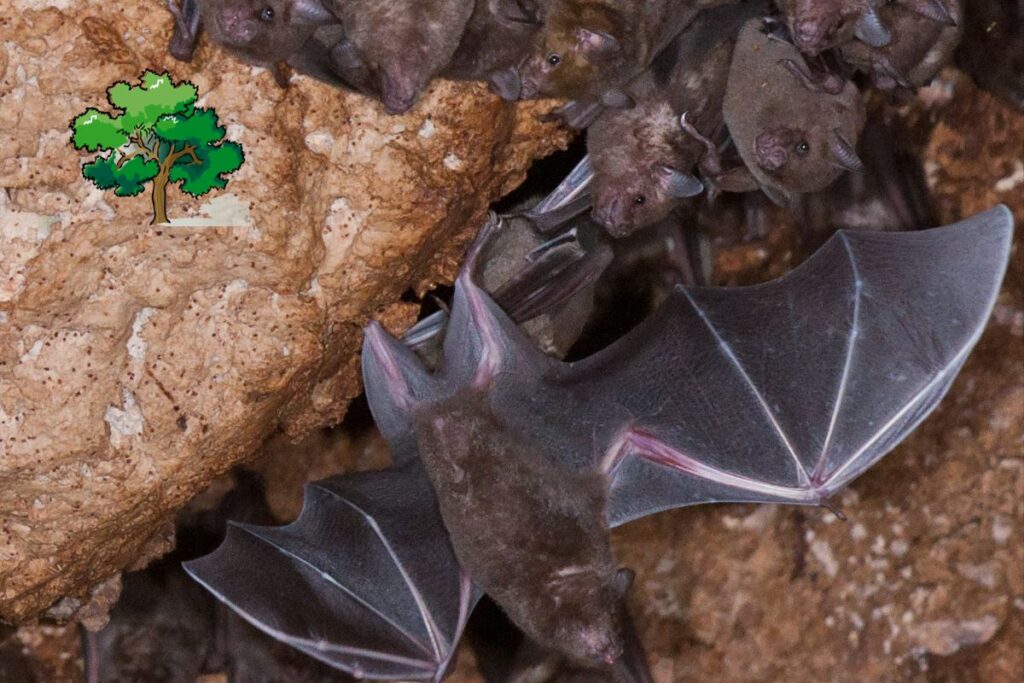
This species is characterized by its short, broad wings, and a short, blunt snout.
The Antillean fruit bat is primarily frugivorous, feeding on a variety of fruits such as guava, figs, and mangoes.
Like other fruit-eating species, it plays a crucial role in seed dispersal within the forest ecosystem.
The Puerto Rican Sharp-nosed Crab
The Puerto Rican sharp-nosed crab (Pseudothelphusa garmani) is an endemic freshwater crab species found in El Yunque National Forest.
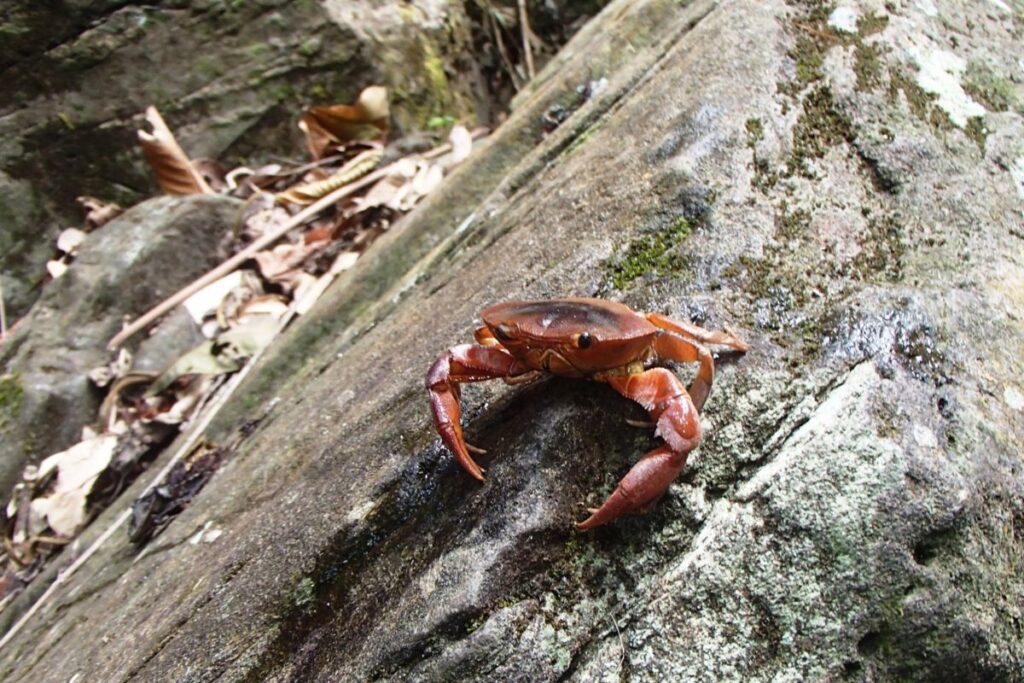
This small, colorful crab is characterized by its sharp, pointed snout, and can be found in the forest’s rivers and streams.
The Puerto Rican sharp-nosed crab is omnivorous, feeding on both plant and animal matter, and plays an essential role in maintaining the health of the aquatic ecosystem by consuming detritus and helping to breakdown organic material.
The Tarpon
The tarpon (Megalops atlanticus) is a large, silvery fish that can occasionally be found in the waterways near El Yunque National Forest.
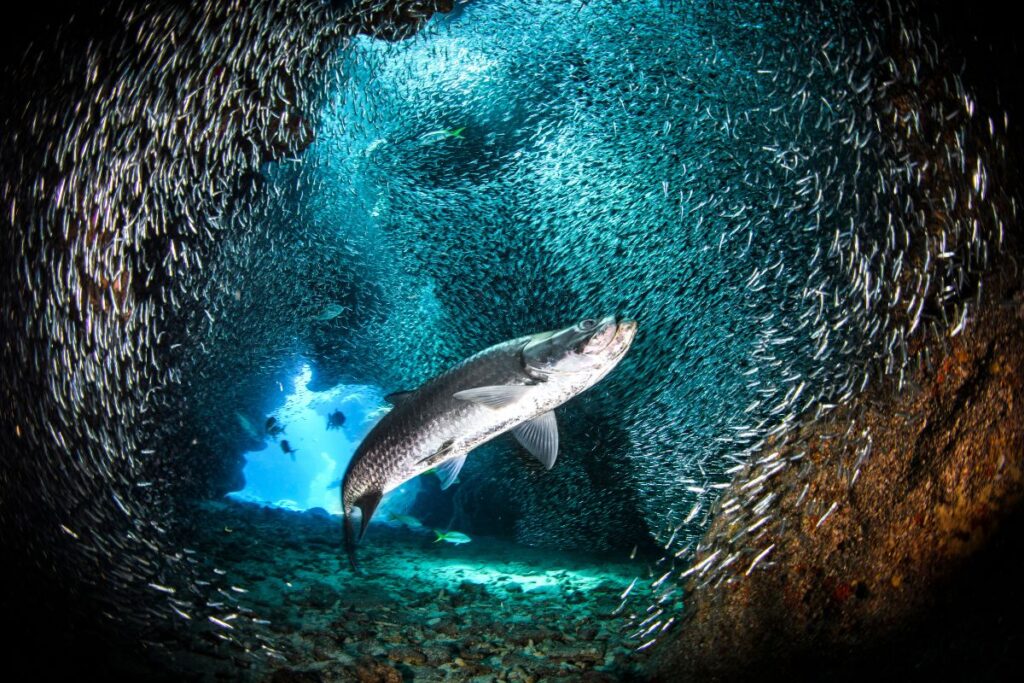
This powerful predator is known for its incredible leaping ability, which it uses to catch prey and evade predators.
The tarpon primarily feeds on smaller fish and crustaceans, playing a vital role in maintaining the balance of the aquatic ecosystem.
The Puerto Rican Woodpecker
The Puerto Rican woodpecker (Melanerpes portoricensis) is a medium-sized, endemic woodpecker found in El Yunque National Forest.
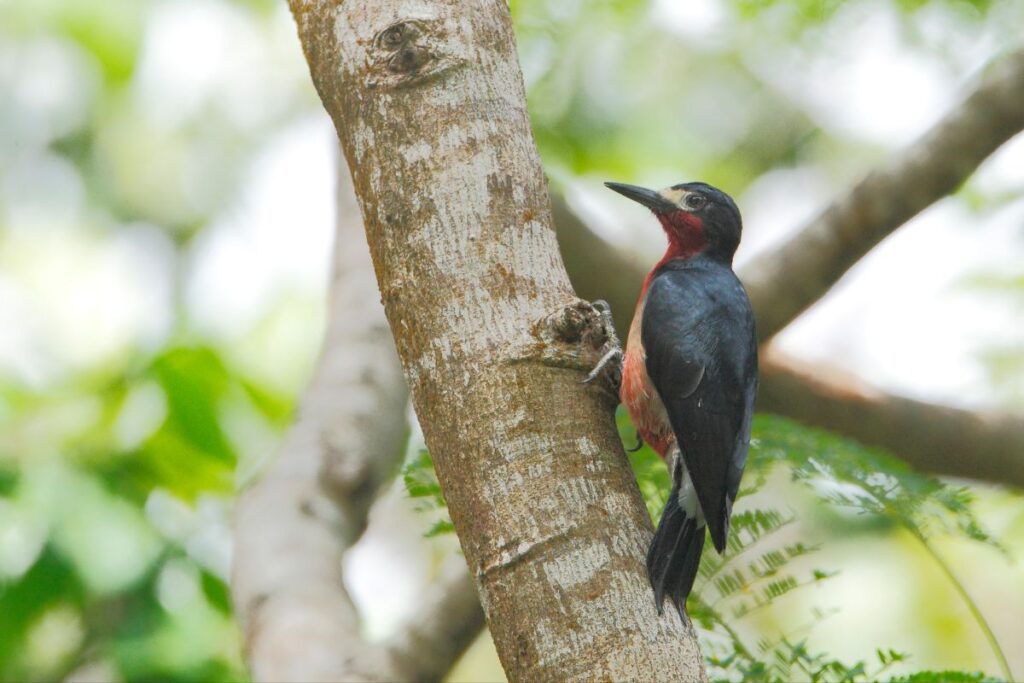
This striking bird is characterized by its black and white barred plumage, red crown, and chisel-like bill.
The Puerto Rican woodpecker is an essential part of the forest ecosystem, as it excavates cavities in trees for nesting and feeding, which are then utilized by various other bird species and small mammals.
The Puerto Rican Spindalis
The Puerto Rican spindalis (Spindalis portoricensis) is a small, colorful songbird endemic to the island. This species is characterized by its bright yellow underparts, black and white striped head, and olive-green back.
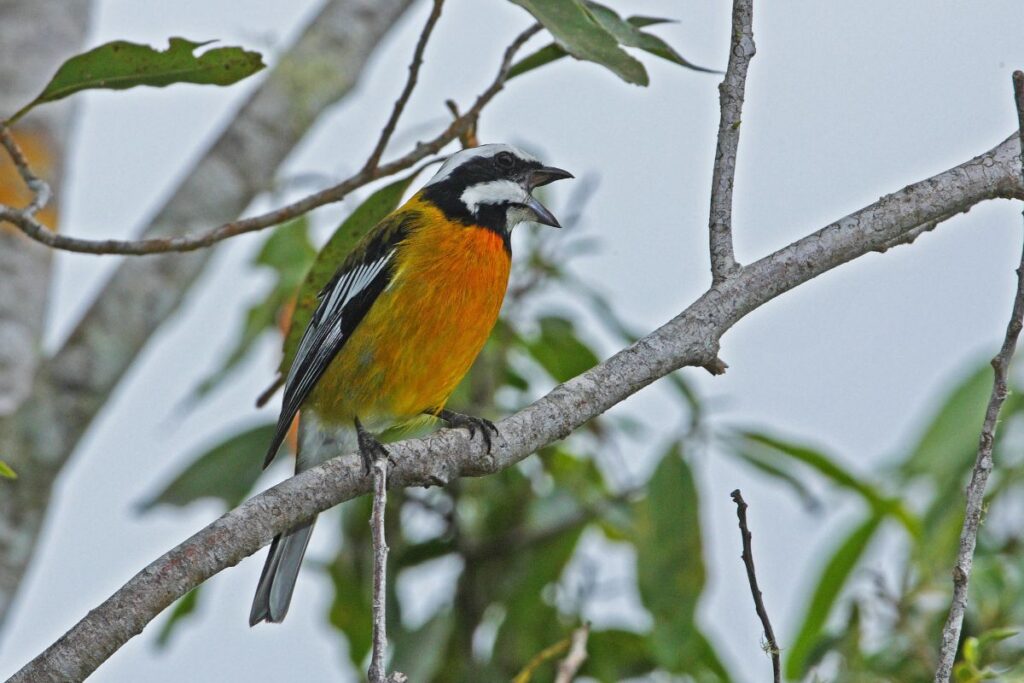
The Puerto Rican spindalis is primarily frugivorous, feeding on a variety of fruits, berries, and seeds, but it also consumes insects and small invertebrates.
Like other fruit-eating species, it plays an important role in seed dispersal within the forest ecosystem.
The Masked Duck
The masked duck (Nomonyx dominicus) is a small, secretive waterfowl species that can be found in the wetland areas of El Yunque National Forest.
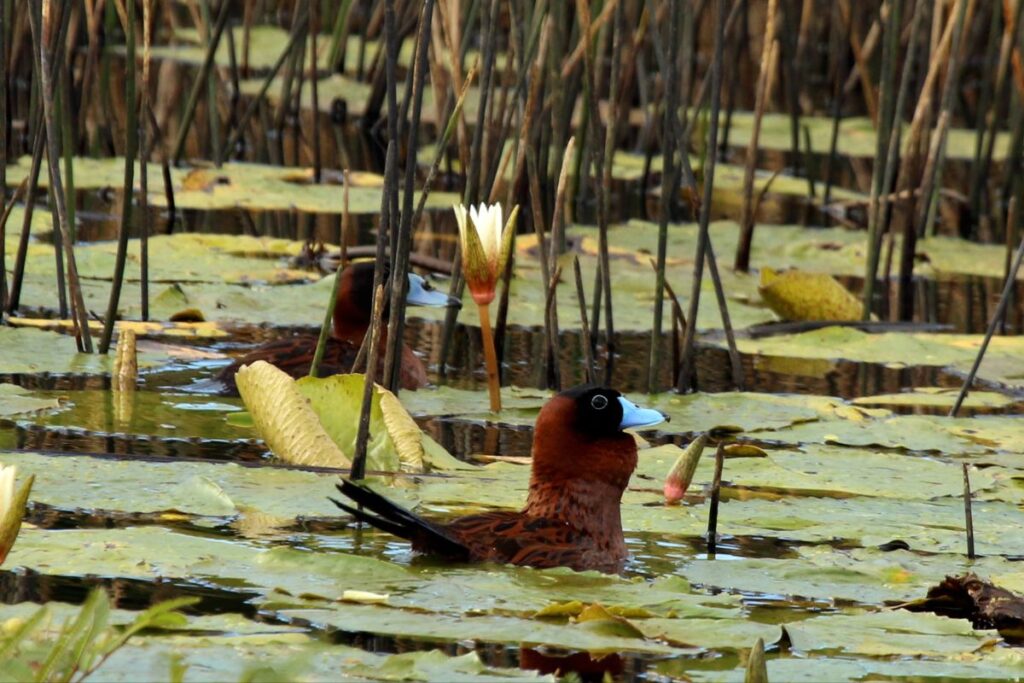
This species is characterized by its chestnut and black plumage, with a distinctive black mask on the face.
The masked duck is primarily herbivorous, feeding on aquatic plants and seeds, but it also consumes insects and other small invertebrates.
The Green-Throated Carib Hummingbird
The green-throated carib hummingbird (Eulampis holosericeus) is a medium-sized hummingbird species that can be found in the canopy of El Yunque National Forest.
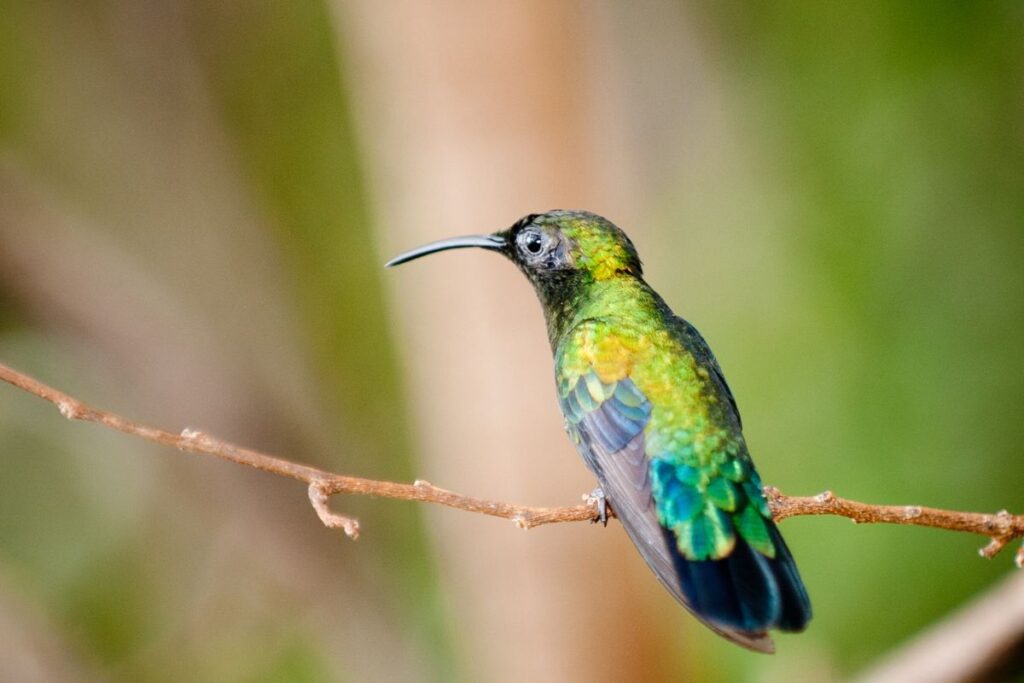
This iridescent green and blue hummingbird is known for its long, curved bill, which it uses to access nectar from tubular flowers.
Like other hummingbird species, the green-throated carib is an essential pollinator, helping to maintain the reproductive success of many flowering plant species within the forest ecosystem.
El Yunque National Forest is a treasure trove of diverse and fascinating wildlife, including many species that are found nowhere else in the world. From the iconic coquí frog to the critically endangered Puerto Rican parrot, the animals and birds of El Yunque play essential roles in maintaining the health and balance of this unique ecosystem.
Visiting this beautiful rainforest provides a rare opportunity to witness these remarkable creatures in their natural habitat and learn about the importance of conservation efforts to protect Puerto Rico’s rich biodiversity.
Areas to See Wildlife in El Yunque National Forest, Puerto Rico
El Yunque National Forest is a lush, tropical paradise that teems with fascinating wildlife, including many species that are endemic to Puerto Rico.
Visiting this beautiful rainforest offers an incredible opportunity to witness these remarkable creatures in their natural habitat.
In this guide, we will explore seven must-visit areas within El Yunque National Forest where you can discover the incredible flora and fauna that call this unique ecosystem home.
La Coca Falls
La Coca Falls, located along the winding PR-191 road, is a breathtaking 85-foot (26-meter) waterfall that cascades down a moss-covered rock face.
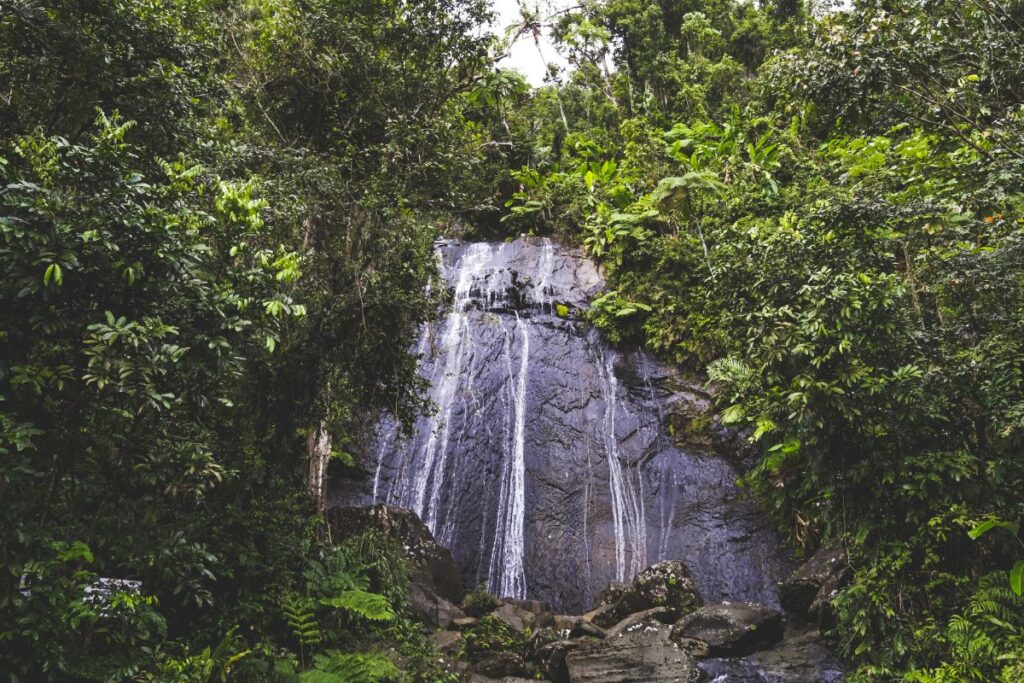
The area surrounding the falls is home to an abundance of wildlife, including coquí frogs, lizards, and various bird species, such as the Puerto Rican tody and the green-throated carib hummingbird.
The moist environment created by the waterfall provides the perfect habitat for many species, so take your time exploring the area.
Don’t forget to bring your camera to capture the beautiful scenery and the vibrant wildlife that inhabits this enchanting location.
Yokahú Tower
Yokahú Tower is a 69-foot (21-meter) observation tower that offers spectacular panoramic views of El Yunque National Forest and the surrounding landscape.
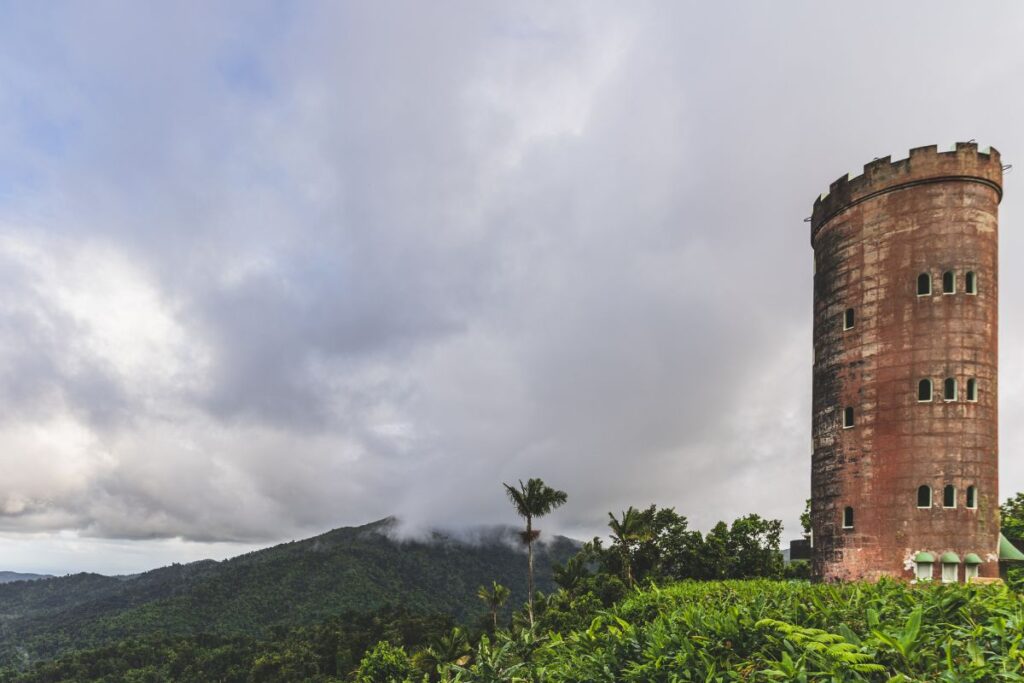
As you climb the tower, keep an eye out for the many bird species that inhabit the forest canopy, such as the Puerto Rican spindalis, the Antillean euphonia, and the scaly-naped pigeon.
The tower’s elevated position provides an excellent vantage point for birdwatching and spotting other wildlife, such as the elusive Puerto Rican boa and the Puerto Rican crested anole, as they move through the trees below.
Big Tree Trail
Big Tree Trail is a popular 1.9-mile (3-kilometer) round-trip hike that takes you through the lush vegetation of El Yunque National Forest, leading to the stunning La Mina Falls.
As you walk along this well-maintained trail, you will have the opportunity to see a variety of wildlife, including the iconic coquí frog, the Puerto Rican parrot, and the Antillean fruit bat.
The trail is also home to a diverse array of plant life, such as towering tree ferns, bromeliads, and orchids, which provide essential habitat and food sources for many of the forest’s inhabitants.
El Portal Visitor Center
The El Portal Visitor Center is the perfect starting point for your visit to El Yunque National Forest.
Here, you can learn about the history, ecology, and conservation efforts in the forest through interactive exhibits and informative displays.
The center is surrounded by lush gardens and walking trails, where you can spot various bird species, including the Puerto Rican woodpecker, the greater Antillean grackle, and the northern potoo.
The visitor center also features a butterfly garden, where you can observe the colorful guava skipper butterfly and other native species as they flutter among the flowers.
La Mina Falls
La Mina Falls is a spectacular 35-foot (10.7-meter) waterfall located at the end of the Big Tree Trail. This picturesque spot is a popular destination for swimming and relaxing in the refreshing waters.
The area surrounding the falls is teeming with wildlife, such as the Puerto Rican bank tree snail, the green-throated carib hummingbird, and various lizard species.
The constant spray of water from the falls creates a moist microclimate, which supports a diverse array of flora and fauna, making it an excellent location for wildlife observation and photography.
Mt. Britton Trail
Mt. Britton Trail is a moderately challenging 2.5-mile (4-kilometer) round-trip hike that takes you through the lush cloud forest of El Yunque National Forest to the summit of Mt. Britton.
At an elevation of 3,087 feet (941 meters), the summit provides breathtaking views of the surrounding landscape and offers a unique opportunity to observe the diverse wildlife that inhabits the higher elevations of the forest.
As you hike along the trail, keep an eye out for the elusive Puerto Rican sharp-shinned hawk, the endemic Puerto Rican screech owl, and the Puerto Rican tanager.
The dense cloud forest vegetation also supports a variety of epiphytes, such as orchids, bromeliads, and ferns, which provide essential habitat for many smaller creatures, including insects, amphibians, and reptiles.
Palo Colorado Recreation Area
The Palo Colorado Recreation Area is a serene spot within El Yunque National Forest that features picnic facilities, walking trails, and access to the Caimitillo Trail and the Tradewinds Trail.
This area is home to a variety of wildlife species, including the endemic Puerto Rican boa, the Antillean manatee in nearby waterways, and various bird species like the white-crowned pigeon and the Antillean mango hummingbird.
The recreation area is surrounded by lush vegetation, including towering bamboo groves, which provide ample opportunities for wildlife observation and photography.
Tips for Seeing and Photographing Wildlife in El Yunque National Forest, Puerto Rico
El Yunque National Forest is a haven for wildlife enthusiasts and photographers, offering an incredible opportunity to observe and capture images of the unique flora and fauna found within this lush, tropical paradise.
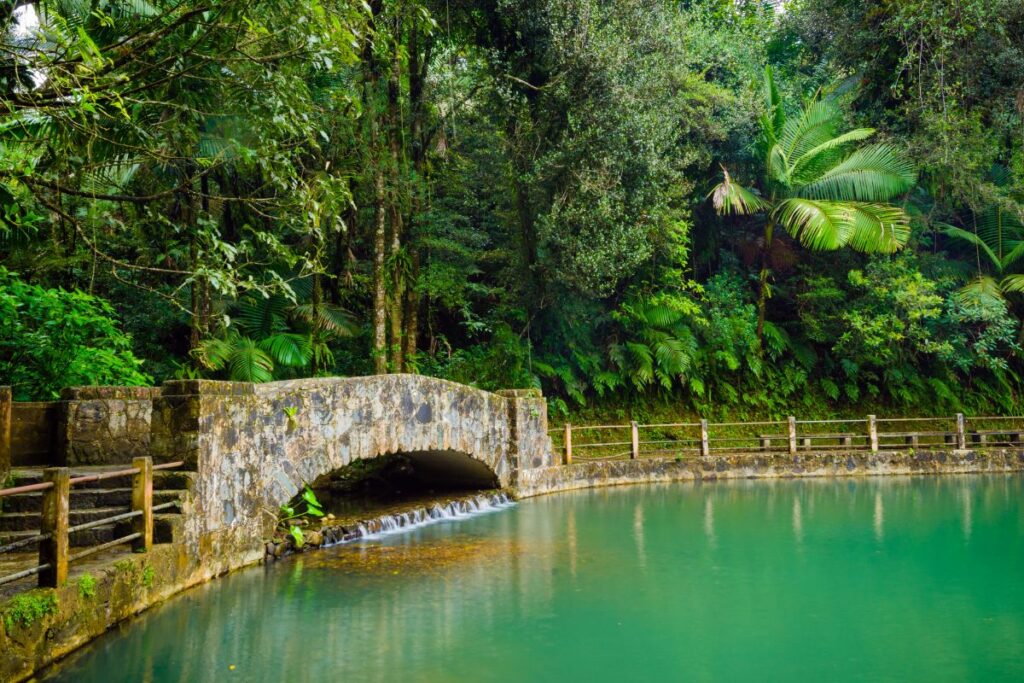
To make the most of your visit and increase your chances of spotting and photographing wildlife, follow these expert tips for a successful and memorable experience.
Be patient and quiet
Wildlife can be elusive and easily spooked by loud noises or sudden movements. Patience and quiet observation are key when trying to spot animals in their natural habitat.
Find a comfortable spot and wait quietly for wildlife to appear.
Keep in mind that many species are more active during specific times of the day, so plan your visit accordingly.
Use binoculars and telephoto lenses
Invest in a good pair of binoculars or a telephoto lens for your camera to help you observe and photograph wildlife from a safe distance.
Getting too close can disturb the animals and may even put you in danger.
These tools will allow you to appreciate the beauty of the creatures without causing any unnecessary stress or harm.
Dress in camouflage or muted colors
To blend in with your surroundings and avoid drawing attention to yourself, wear camouflage or clothing in muted colors, such as greens and browns.
Bright colors and flashy patterns can scare away wildlife, making it more challenging to spot and photograph them.
Visit early in the morning or late in the afternoon
Many animals are most active during the early morning and late afternoon hours, making these times ideal for wildlife observation and photography.
These periods also offer softer, more flattering light for capturing images, which can result in more striking photographs.
Learn about the behavior of the animals you want to observe
Familiarize yourself with the habits and behaviors of the species you’re most interested in observing.
Knowing when and where to find them, as well as understanding their typical activities, can greatly increase your chances of spotting and photographing them.
Researching their preferred habitats, feeding patterns, and mating behaviors will also help you plan your visit more effectively.
Practice ethical wildlife photography
Always prioritize the well-being of the animals and the environment over capturing the perfect shot.
Maintain a safe distance, avoid using flash photography, and never bait or manipulate animals for the sake of a photo.
Following these ethical guidelines will help to ensure that you have a positive impact on the ecosystem and the wildlife you encounter.
Consider hiring a local guide for a more immersive experience
Local guides are often intimately familiar with the wildlife and ecosystems of El Yunque National Forest.
They can help you locate and identify species, share interesting facts and insights, and assist with your photography efforts.
Hiring a local guide not only enhances your experience but also supports the local economy and promotes sustainable tourism.
Ethical Considerations for Wildlife Encounters
When exploring the rich biodiversity of El Yunque National Forest, it’s essential to prioritize the well-being of the animals and their habitat.
Maintain a safe distance from wildlife and avoid any actions that may disrupt their behavior.
Feeding animals can lead to dependence on humans and health issues.
Staying on designated trails minimizes the risk of harming the environment and prevents disturbing animals in their natural habitat.
Additionally, practice the Leave No Trace principles by picking up your trash and minimizing your impact on the forest.
Best Time to Visit El Yunque National Forest
El Yunque National Forest is a year-round destination, but the best time to visit depends on your interests and preferences.
The rainy season, which runs from April to November, offers lush, vibrant foliage, but trails can be muddy and slippery.
The dry season, from December to March, offers more comfortable hiking conditions and coincides with the migratory bird season.
Be aware that the peak tourist season is from December to April, so you may encounter larger crowds during this time.
Accommodations and Amenities in and around El Yunque National Forest
While there is no lodging available within El Yunque National Forest, there are several campgrounds for those looking to immerse themselves in the forest’s natural beauty. Advance reservations are required for camping.
Outside the park, you’ll find a range of accommodations, including hotels, resorts, guesthouses, and vacation rentals in nearby towns such as Rio Grande, Luquillo, and Fajardo.
There are also several restaurants and cafes in the area, offering a variety of dining options.
Inside the park, the El Portal Visitor Center and Palo Colorado Recreation Area provide restrooms, picnic facilities, and informative exhibits.
Conclusion
El Yunque National Forest is a treasure trove of unique wildlife, making it a must-visit destination for nature enthusiasts, birdwatchers, and photographers.
With its diverse array of flora and fauna, picturesque hiking trails, and immersive experiences, a trip to El Yunque is sure to leave you with unforgettable memories.

